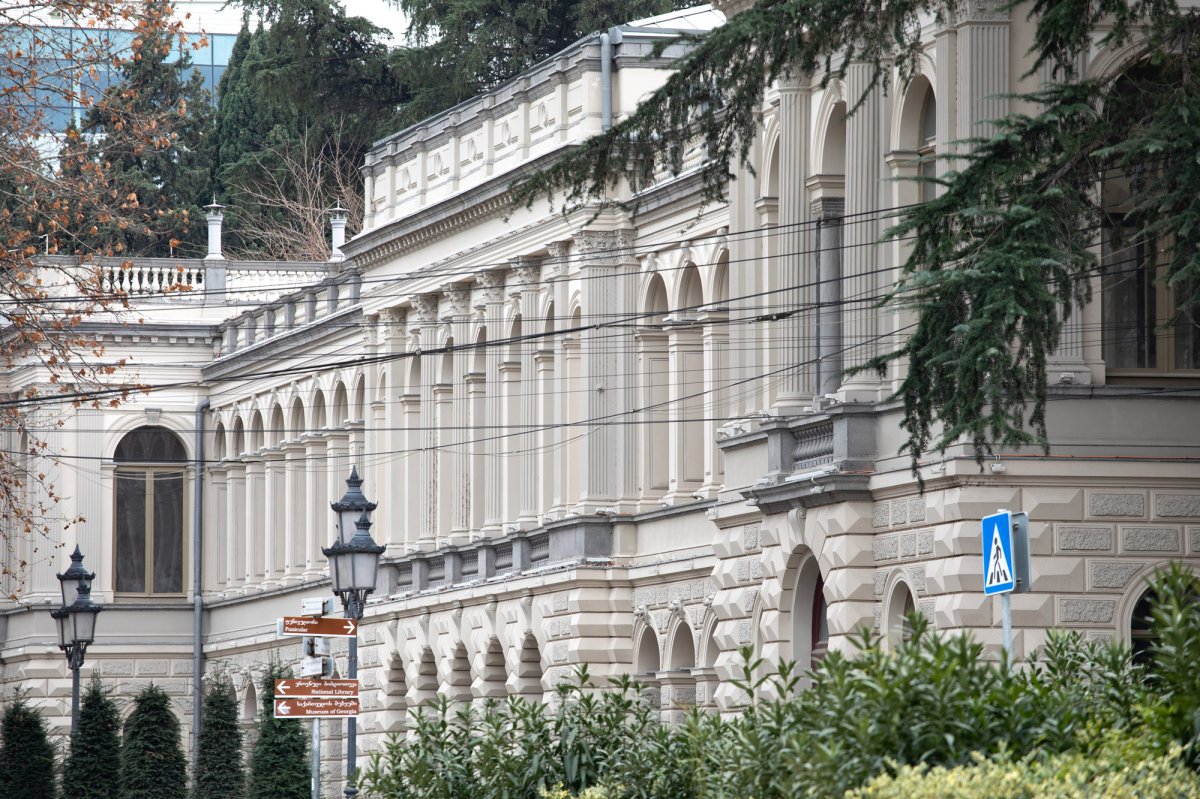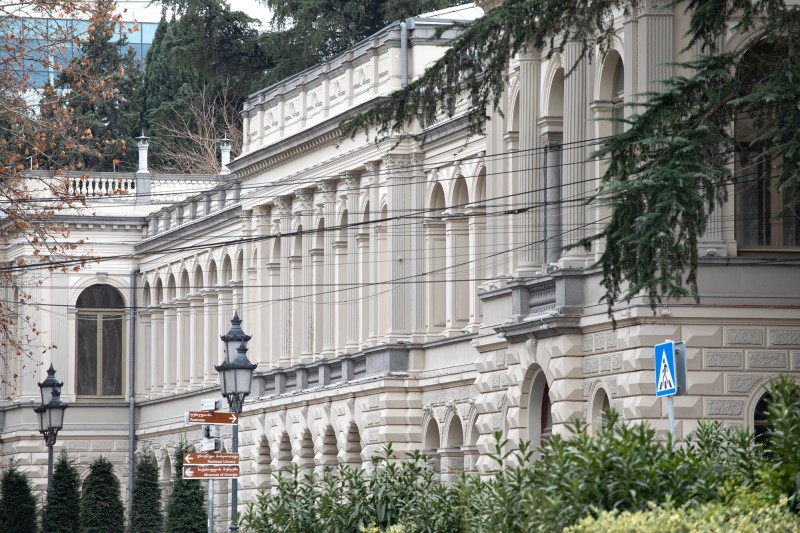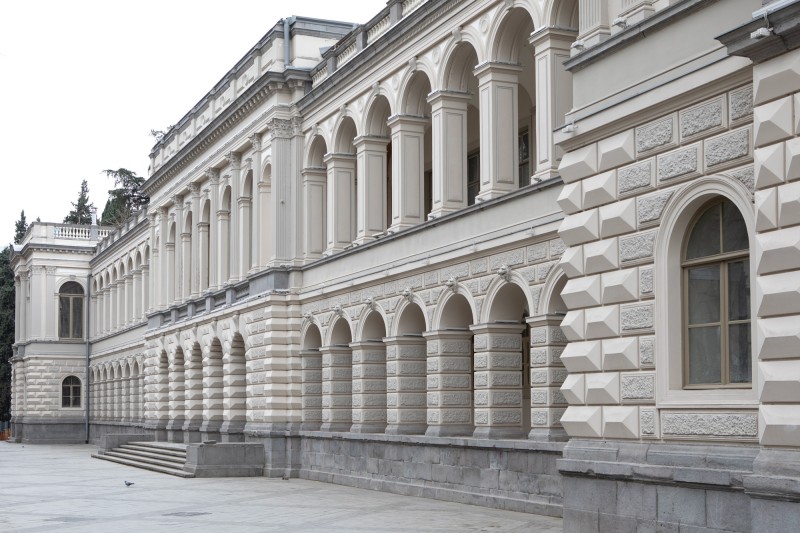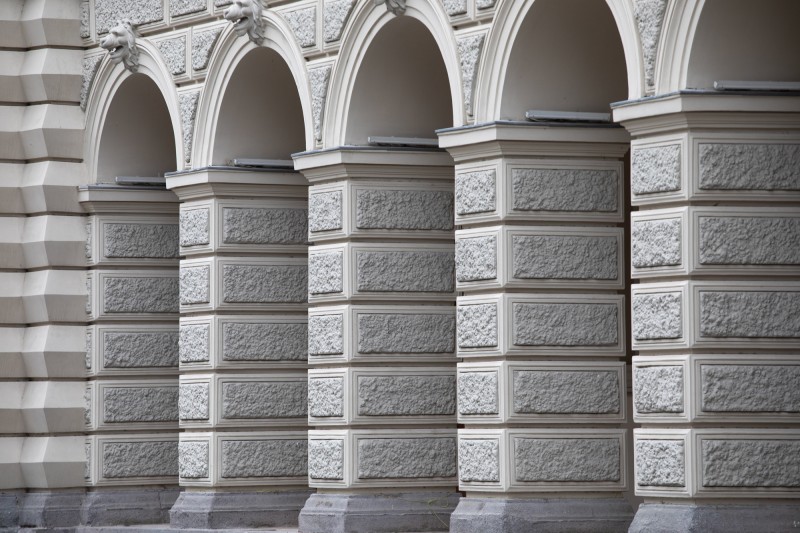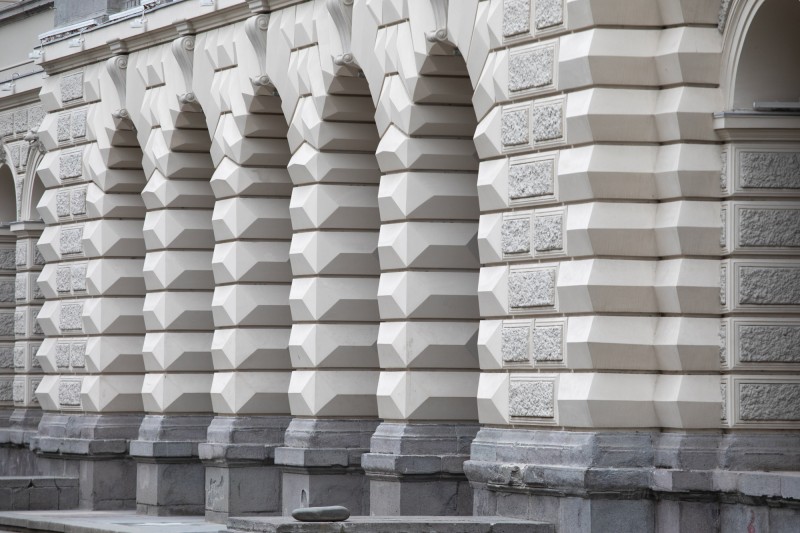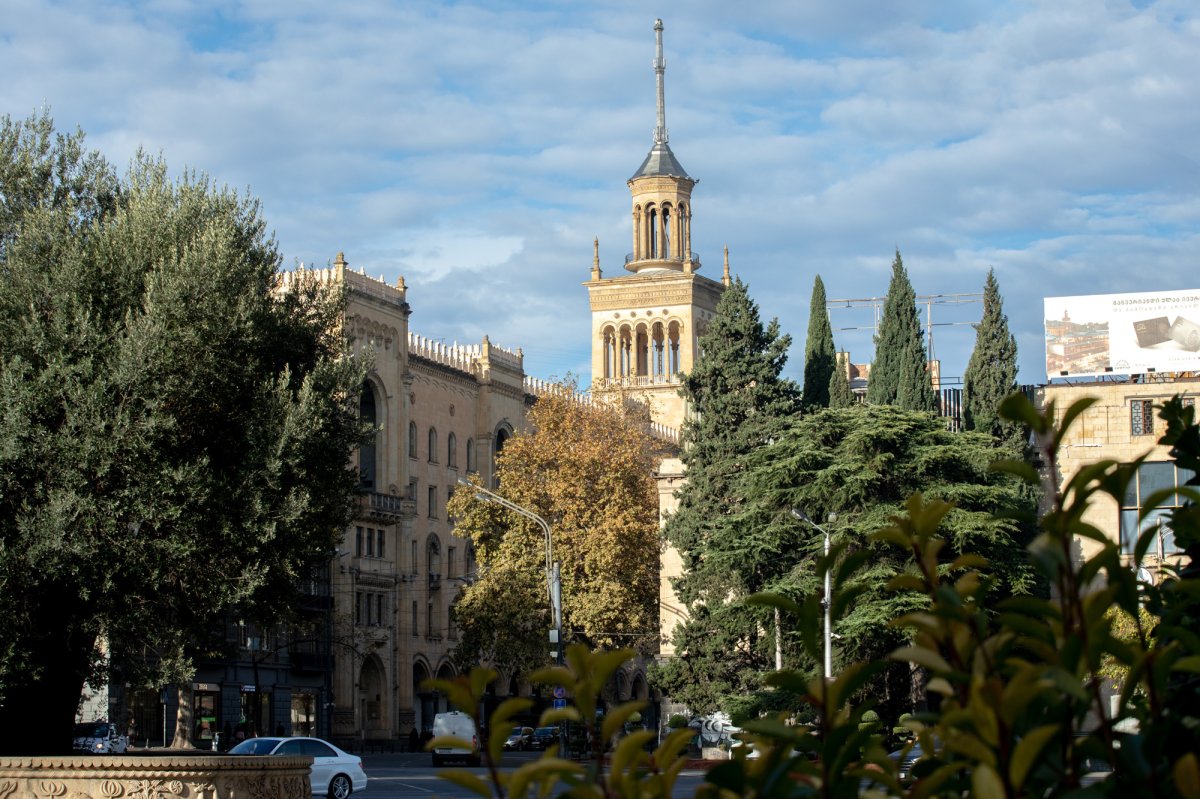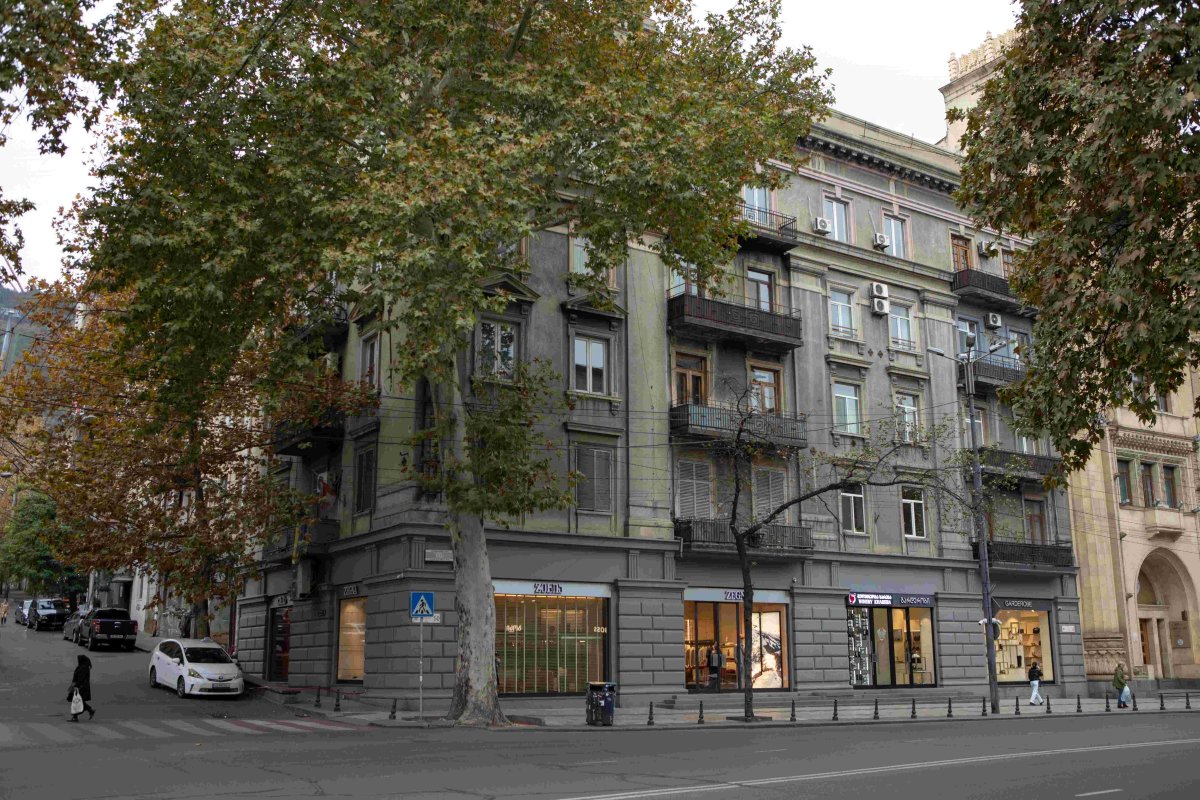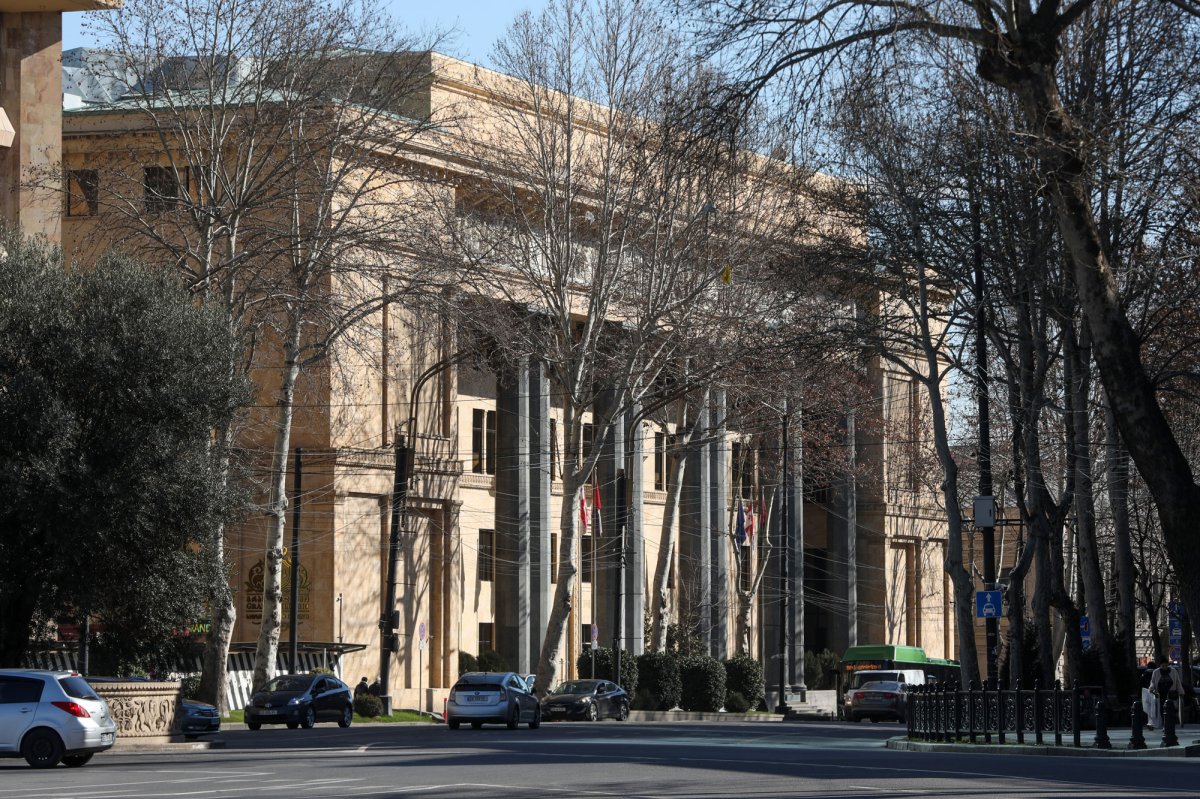
Information in details
The history of the building began in 1802 when the establishment of the Russian government in Georgia was followed by the appointment of the Governor General in Tbilisi. A small building was built for him in 1802. However, in 1807, the building was demolished and replaced with a new one. It was a sample of Russian classicism, the most grandiose building in Tbilisi at that time, which was also a symbol of the government of that time.
After that, the palace was remodeled several times. In 1818, it was demolished and a new building was built according to the project of architect Brownmiller. Its facade can be seen on the Tbilisi panorama of 1821 - with this change, the original administrative house became a real palace residence of the Governor General of the Transcaucasus.
In 1845-47, the architect Semyonov, invited from Russia, thoroughly changed the appearance of this palace and, in fact, built an interesting and unique building in the style of classicism. In the same period, a garden with alleys and arbour was planted, and a pool with fountains was built.
In 1865, Otto Jacob Simonson, a Swedish architect working in Tbilisi, started a thorough reconstruction of the building and finished it in 4 years. In 1869, the Palace of the Vice Roy took its final form, as it is today. Simonson significantly enlarged the Palace built by N. Semyonov and gave it a new look.
After Sovietization, from 1921 the government of Soviet Georgia was housed in the former palace of the Vice Roy.
On May 26, 1918, at 4:50 p.m., the first session of the Georgian National Council was opened in the aforementioned palace, chaired by Noe Jordania. He introduced the " Act of Independence of Georgia" to the members and candidates of the session, which was approved by the National Council.
The flag of the independent country was raised right on top of the palace of the Viceroy of the Caucasus, and Georgia was officially declared a democratic republic. The palace was often the host of political-economic or cultural changes and important decisions of the neighbouring countries. In 1918, the governments of Armenia and Azerbaijan celebrated the Declaration of Independence in this outstanding building of Tbilisi, recognized as the administrative and economic centre of Transcaucasia. Today, the sign marking these events decorates the wall of the main hall of the National Palace of Students and Youth of Georgia. The first constitution of Georgia was adopted in the palace on February 21, 1921, and within a week, Georgia's independence was terminated - on February 25, the Russian Red Army entered Tbilisi. Since that time, the main building of the country that was deprived of its independence still did not lose its function: sometimes the Revkom worked in the palace, sometimes the Transcaucasian Federal Government.
In 1937, the palace turned into a centre for educating students. About 15 million manats were allocated for its improvement. The architectural workshop of the Executive Committee of the Tbilisi City Council was assigned to work on the reconstruction project. The project was led by architect Archil Kurdiani. Study rooms, laboratories, workshops, sports and entertainment halls were arranged in the 300 hundred rooms and halls of the palace. They opened a lecture hall, a reading room, equipped a theatre stage, and a puppet theatre. The old ballroom was replaced by a children's theatre hall, and the large dining room and luxurious salon of the Vice Roy were turned into a so-called mirror and white halls. On May 2, 1941, the building was opened under the name of the Republican Palace of Pioneers and Students. The garden that surrounded the palace became his property.
In 1991, after the restoration of Georgia's independence, the National Palace continued its work as an after-school education centre. In 2015, the Tbilisi Municipality founded the non-profit legal entity "National Palace of Pupils and Youth", which continues its 82-year history and at the same time represents a leading organization with a modern cultural, scientific, training and educational mission, in which adults receive education along with pupils-youth. Today, about 3,000 beneficiaries are registered in the National Palace.
The palace is located on a high ground along Rustaveli Avenue and stands on a stone plinth. The facade facing 9 April Street is not of equal height due to the slope. The individual blocks of the building are pushed forward, forming risalites. On the opposite side of the building, there is a palace garden with a terrace. The main facade is symmetrical. On the opposite side, there are doors on the first floor in the sharply raised risalites, and above them is a French balcony with molded balustrade railings. Round Corinthian half-columns (pilasters) on both sides of the balcony opening give pomp to the risalites, which are supported by a Renaissance arch. A similar composition is repeated in the facade risalites facing Chitadze Street.
There is an entrance to the palace in the centre of the building. On top of it, there is a whole row of windows. Between the risalites, on both floors, arched galleries are arranged, which gives rhythm to the composition of the facade, at the same time, it seems to add more solidity. Overall, the facade is plain and orderly. The planes of the first-floor wall are decorated with faceted rusts. The facade leading to 9 April (Chitadze district) street consists of several parts. The rear part of the facade is decorated much plainer than the front part of the building, the decoration is very scarce - between the rectangular windows, there is one Doric semi-column, which moves the arches. The facade of the other side (garden side) is designed with a similar composition. The rear, back facade and the facades of the inner yard are relatively plain, with less decoration.
In contrast to the facades, the interior halls of the palace and the central foyer are decorated with luxurious decor and paintings. A variety of materials and techniques are used in the decoration, we find decorative wall treatment, ornamental plasterwork and imitation marble pattern surfaces.
In general, the building has a Renaissance look and is one of the important examples of Tbilisi architecture.


 თბილისი, Shota Rustaveli Ave N6
თბილისი, Shota Rustaveli Ave N6
 41.6954865, 44.7986820
41.6954865, 44.7986820

